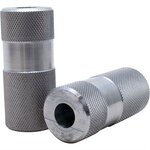- Messages
- 132
- Reactions
- 106
New to reloading. A friend of mine said over the holiday break I could come over and get my first lesson in reloading. I'd like to start with 300BLK. I'd like to pick up a die set, but I have no idea where to start. I keep hearing carbide is good? And micro adjustments are good? Any help would be appreciated!
James
James















